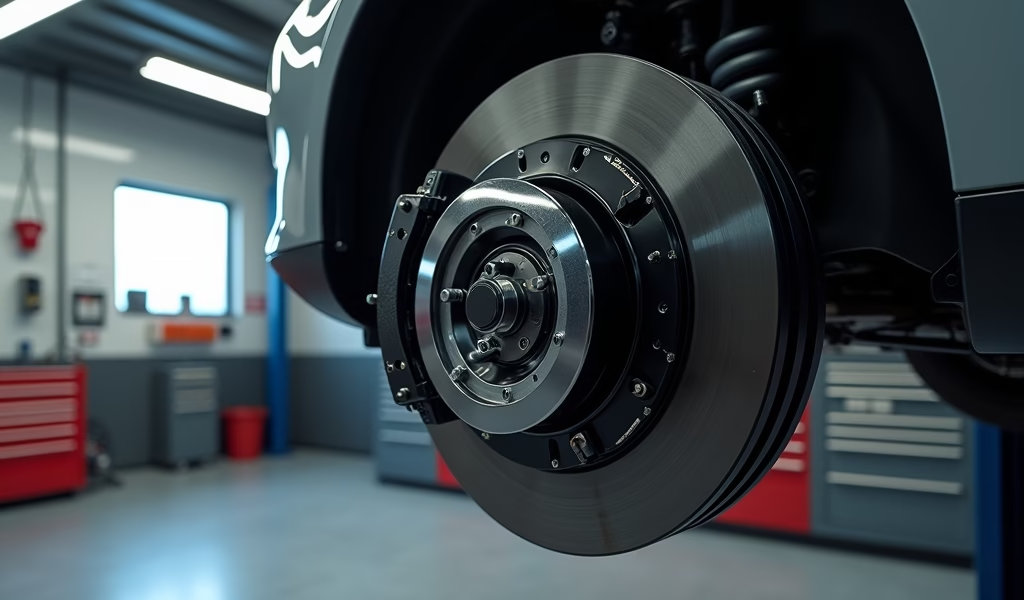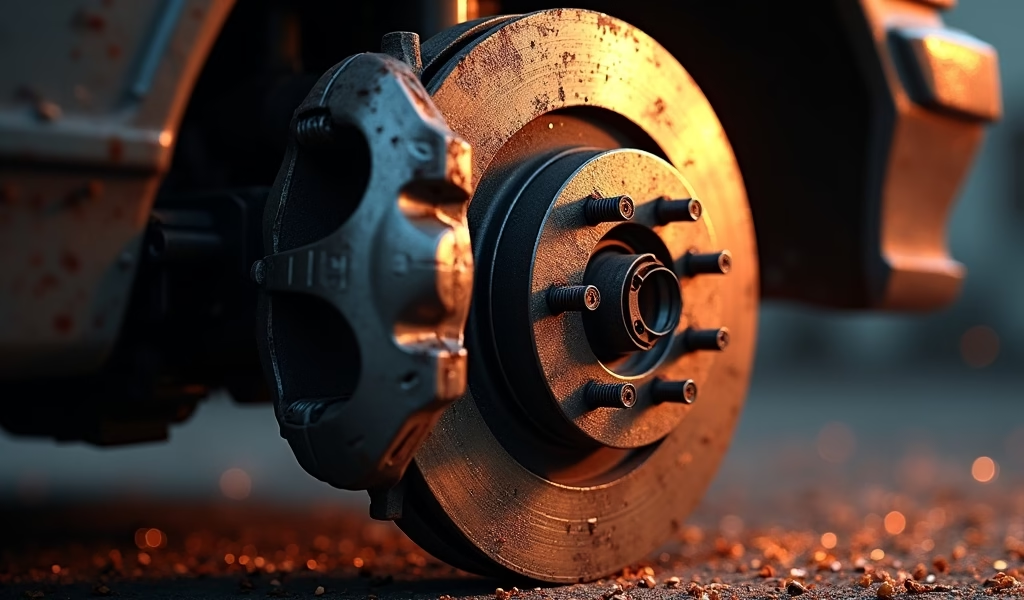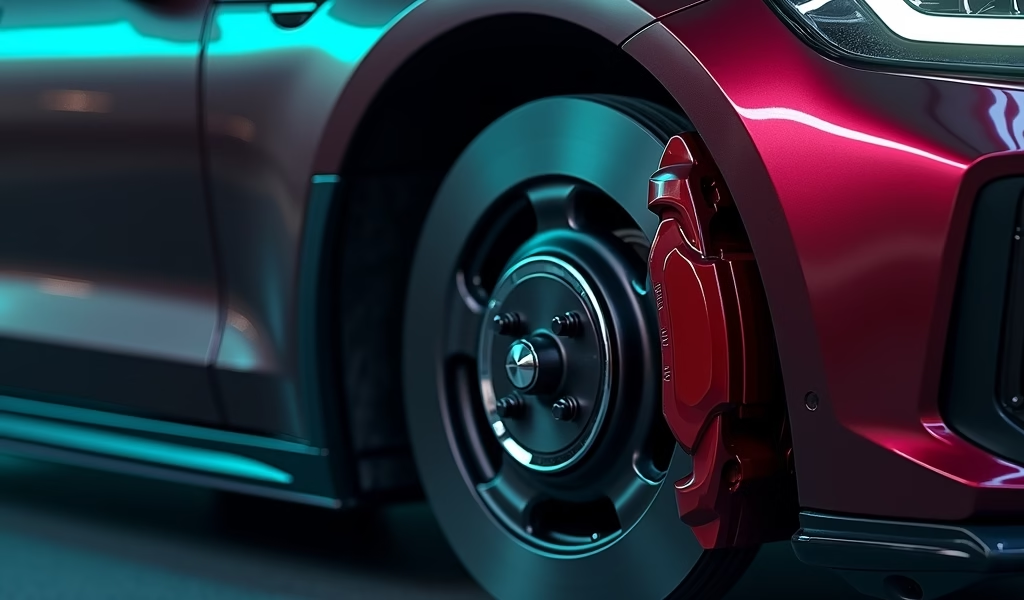Overview
This article explains that brake pad and rotor replacement typically costs $300-$700 per axle depending on vehicle type, part quality, and service provider, with DIY options potentially saving 40-60% compared to professional installation. It offers practical advice on recognizing when replacement is needed, extending component lifespan through driving habits, and selecting appropriate quality parts for different vehicles while emphasizing that brakes are critical safety systems where cutting corners isn’t worth the risk.
Table of Contents
- Understanding Brake Systems: What Are Brake Pads and Rotors?
- Signs Your Brake Pads and Rotors Need Replacement
- Average Brake Pads and Rotors Replacement Cost
- Factors That Affect Replacement Costs
- DIY vs. Professional Replacement: Cost Comparison
- How to Extend the Lifespan of Your Brake Components
- Choosing Quality Parts Without Breaking the Bank
- Conclusion
- Frequently Asked Questions
When it comes to vehicle maintenance, few systems are as critical as your brakes. Understanding the brake pads and rotors replacement cost is essential for every driver, not just for budgeting purposes but for safety as well. As a mechanic with over 15 years of experience, I’ve seen firsthand how putting off brake maintenance can lead to more expensive repairs—not to mention dangerous driving conditions.
In this comprehensive guide, I’ll break down everything you need to know about brake pad and rotor replacement costs, from average price ranges to factors that influence pricing. I’ll also share some insider tips on how to save money without compromising safety. Let’s dive in!
Understanding Brake Systems: What Are Brake Pads and Rotors?
Before we talk dollars and cents, let’s get on the same page about what these components actually do. Your vehicle’s braking system is a marvel of engineering that converts kinetic energy (motion) into thermal energy (heat) through friction.
Brake pads are the friction material that presses against the rotors when you hit the brake pedal. They’re made of a composite material designed to withstand high temperatures and provide reliable stopping power. Think of them as the sacrificial heroes of your brake system—they’re designed to wear down over time so your other components don’t have to.
Rotors (also called brake discs) are the shiny metal discs visible behind your wheels. When you press the brake pedal, your brake pads squeeze against these rotors, creating the friction that slows your vehicle. Rotors need to be smooth, even, and of proper thickness to function correctly.
Together, these components form the business end of your braking system. When either component wears beyond acceptable limits, your stopping power diminishes, and replacement becomes necessary for your safety.

Signs Your Brake Pads and Rotors Need Replacement
Your vehicle will usually give you several warning signs when brake components are wearing out. Paying attention to these signals can help you plan for replacement before you’re faced with a complete brake failure. Here are the most common indicators:
- Squealing or screeching noises when braking
- Grinding sounds (metal-on-metal contact indicates your pads are completely worn)
- Vibration or pulsation in the brake pedal
- Vehicle pulling to one side during braking
- Brake warning light illuminated on your dashboard
- Visible thinning of brake pads (less than ¼ inch of pad material)
- Visible scoring, cracking, or uneven wear on rotors
- Increased stopping distance
That squealing sound? It’s actually by design. Many brake pads include a small metal tab called a wear indicator that creates that noise when pads reach a certain thinness. It’s your car’s way of saying, “Hey, I need some attention here!”
If you’re experiencing any of these symptoms, it’s time to check your brake pads and rotors replacement cost and schedule service. Ignoring these warning signs can lead to more expensive repairs down the road and potentially hazardous driving conditions.
Average Brake Pads and Rotors Replacement Cost
Let’s talk numbers. The cost to replace brake pads and rotors can vary widely based on several factors, but I’ll give you some general ranges to help with your budgeting.
For a typical passenger vehicle, you can expect to pay approximately:
- Brake pads only: $100-$300 per axle
- Rotors only: $200-$400 per axle
- Complete brake job (pads and rotors): $300-$700 per axle
These costs typically include both parts and labor. Remember, your vehicle has two axles (front and rear), so if you’re replacing all brakes at once, you’ll need to double these figures.
Premium or performance vehicles generally fall on the higher end of the spectrum—or even exceed it. For luxury brands like Mercedes-Benz, BMW, or Audi, brake service costs can run significantly higher, sometimes $1,000 or more per axle for parts and professional installation.
It’s worth noting that front brakes typically wear faster than rear brakes because they handle more of the stopping power. About 60-70% of your vehicle’s braking force is applied to the front wheels, which means you’ll likely need to replace front brake components more frequently.
Factors That Affect Replacement Costs
Not all brake jobs are created equal. Several key factors influence how much you’ll pay for brake pad and rotor replacement:
Vehicle Type and Size: Larger vehicles like trucks and SUVs have larger brake components, which cost more. Performance and luxury vehicles require specialized parts that carry premium pricing.
Part Quality: Brake components come in different quality tiers:
- Economy/Basic: Lowest cost, shortest lifespan (typically 15,000-30,000 miles)
- OEM (Original Equipment Manufacturer): Moderate cost, decent lifespan (typically 30,000-50,000 miles)
- Premium/Performance: Highest cost, longest lifespan (can exceed 70,000 miles in some cases)
Geographic Location: Labor rates vary significantly by region. Urban areas and places with a higher cost of living typically charge more for brake service than rural locations.
Service Provider: Dealerships usually charge the highest rates, independent repair shops fall in the middle, and chain repair facilities often offer the lowest prices (though quality can vary).
Brake System Design: Some vehicles have more complex brake systems that take longer to service, increasing labor costs. For instance, vehicles with electronic parking brakes may require special tools or procedures.
Additional Services: Often, other components may need attention during a brake job, such as:
- Caliper replacement: $100-$300 per caliper
- Brake fluid flush: $80-$150
- Brake line replacement: $150-$300
These “while you’re in there” services can significantly increase the total cost, but they’re often worth considering if the components are showing wear or are due for maintenance anyway.

DIY vs. Professional Replacement: Cost Comparison
For the mechanically inclined, replacing brake pads and sometimes even rotors can be a DIY project that saves considerable money. Let’s break down the cost comparison:
DIY Replacement Costs:
- Brake pads: $30-$150 per axle (depending on quality)
- Rotors: $70-$200 per axle (depending on quality and vehicle)
- One-time tool costs: $50-$200 (if you don’t already have them)
Total DIY cost: $100-$350 per axle plus tools
Professional Replacement:
- Parts cost: Same as DIY
- Labor: $150-$300 per axle
- Shop supplies and disposal fees: $20-$40
Total professional cost: $250-$700 per axle
The savings can be substantial—often 40-60% compared to professional installation. However, DIY brake work comes with some important considerations:
- Safety is paramount—improper brake installation can be dangerous
- Special tools may be required (caliper compressors, torque wrenches)
- You need a suitable workspace and time to complete the job properly
- Professional work usually comes with a warranty
- Mistakes can be costly and potentially dangerous
If you’re confident in your mechanical abilities and have proper tools and resources, DIY brake replacement can save you significant money. Many excellent video tutorials are available online that walk you through the process for specific vehicle models.
However, if you’re unsure or your vehicle has complex braking systems (like electronic parking brakes or regenerative braking), the brakes and rotors cost of professional service is worth the peace of mind.
How to Extend the Lifespan of Your Brake Components
Want to maximize the time between brake jobs? Here are some practical tips from my years in the garage:
- Practice gentle braking: Avoid hard stops whenever possible. Anticipate stops and coast to reduce speed before applying brakes.
- Reduce unnecessary weight: The heavier your vehicle, the harder your brakes work. Clean out that trunk!
- Use engine braking: Downshift to slow down on long descents instead of riding your brakes.
- Regular inspection: Have your brakes checked during routine maintenance (like oil changes) to catch issues early.
- Flush brake fluid: Replace brake fluid every 2-3 years to prevent moisture contamination that can damage internal components.
- Address squealing promptly: Don’t ignore those high-pitched warnings—they’re there for a reason.
Following these practices can potentially double the life of your brake components, saving you hundreds of dollars over the life of your vehicle. The most effective technique? Smooth, anticipatory driving that minimizes hard braking events.
Choosing Quality Parts Without Breaking the Bank
Selecting the right brake components involves balancing cost with quality and performance. Here’s my advice on getting the best value:
For daily drivers: Mid-grade or OEM equivalent pads and standard replacement rotors are usually the sweet spot. They provide reliable performance and reasonable longevity without the premium price tag of top-tier components.
For luxury or performance vehicles: It’s generally worth investing in higher-quality components that match the original specifications. These vehicles often have more demanding braking requirements, and cheaper parts may compromise performance or require more frequent replacement.
For older vehicles: Economy-grade components might make sense if you’re planning to keep the vehicle only a short time. Otherwise, mid-grade is still the better long-term value.
When shopping for parts, consider these money-saving strategies:
- Compare prices across multiple retailers and online sources
- Look for package deals that include both pads and rotors
- Consider remanufactured calipers if replacements are needed
- Ask about price matching at local auto parts stores
- Check for seasonal sales and rebates on brake components
Whichever route you choose, avoid the absolute cheapest parts available. The few dollars saved upfront rarely justify the reduced performance and shorter service life. Quality matters when it comes to the system that stops your vehicle.
Conclusion
Understanding brake pad and rotor replacement cost helps you budget appropriately for this inevitable maintenance task. While prices vary widely based on vehicle type, part quality, and service provider, you can generally expect to pay $300-$700 per axle for a complete brake job including both pads and rotors.
Remember that brakes are perhaps the most critical safety system in your vehicle. While saving money is important, cutting corners on brake maintenance is never worth the risk. Regular inspection, prompt attention to warning signs, and choosing quality components appropriate for your vehicle and driving style are the keys to safe, cost-effective brake maintenance.
Whether you choose the DIY route or professional service, staying informed about proper brake maintenance will help you make confident decisions about your vehicle’s care. After all, when it comes to the ability to stop safely, peace of mind is priceless.
Frequently Asked Questions
How often should brake pads and rotors be replaced?
Brake pads typically need replacement every 30,000-70,000 miles depending on driving habits and material quality. Rotors often last through 2-3 pad replacements (60,000-150,000 miles) but should be inspected whenever pads are replaced.
Can I replace just the brake pads without replacing rotors?
Yes, if the rotors are within specifications for thickness and have no significant grooves or scoring. A mechanic can measure rotor thickness and surface condition to determine if they can be reused or need machining/replacement.
Is it necessary to replace all four brake pads and rotors at once?
No, brake service is typically done by axle (front or rear), not all four corners simultaneously. Front brakes often wear faster and may need service more frequently than rear brakes.
How long does a brake pad and rotor replacement take?
A professional mechanic can typically complete a brake job on one axle in 1-2 hours. DIY replacement might take 2-4 hours per axle for someone with basic mechanical skills.
Are aftermarket brake parts as good as OEM parts?
Quality varies widely among aftermarket brands, with some premium aftermarket options actually outperforming OEM parts. Research specific brands and read reviews before choosing aftermarket alternatives to OEM brake components.


Pingback: Brake Repair Cost: Ultimate 7-Step Guide - knowsyourcar.com
Pingback: Brake Pads and Rotors Cost: Pro Tips - knowsyourcar.com